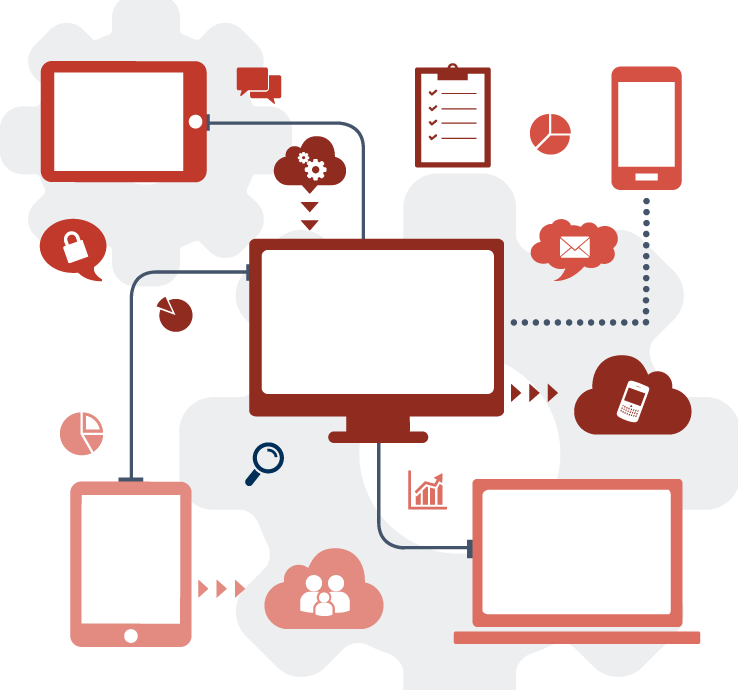The power of AI predictive analytics is here, and it’s reshaping how top leaders drive success.
If you’re not using AI-powered intelligence to propel your executive brand and accelerate business growth, you’re likely leaving significant opportunities behind.
What is AI Predictive Analytics, and Why Should You Care?

AI predictive analytics uses historical data, statistics, and machine learning to forecast future trends.
Yet, its true impact emerges when paired with human ingenuity.
In our work, we’ve found that success comes from integrating the power of AI with the creativity, strategic thinking, and diverse perspectives of a skilled team. That’s what gives leaders the ability to anticipate market trends, predict customer behavior, and stay ahead of business shifts.
Data alone is just a starting point. When combined with creative, human-driven problem-solving, it becomes a catalyst for business growth and meaningful success.
How Does AI Predictive Analytics Drive Business Growth?
As an executive, you understand the pressure of staying ahead in a fast-paced market. What if, instead of reacting to shifts, you had the foresight to anticipate them? That’s the promise of AI predictive analytics — you can transform how you make decisions by turning data into actionable foresight. For instance:

Marketing
One of the most powerful applications of predictive analytics lies in understanding and influencing customer behavior. In our work with customers, we use AI-powered intelligence to combine insights from historical data and identify the exact moments when leads are most likely to convert. For example, we pinpoint which campaigns, content, or touchpoints resonate most, ensuring our team delivers the right message for you at the right time. This boosts ROI and also strengthens your connection with your audience.

Sales
Similarly, sales teams equipped with predictive insights gain a significant edge. With AI-powered insights we can see what your customers will need before they even articulate it. We use forecasting trends to identify emerging customer priorities so we can time your outreach with precision, increasing conversion rates and deepening client relationships. This is a shift from reactive to proactive — a difference that can redefine success.
In fact, one study found that companies using predictive analytics in sales had a 38% higher chance of outperforming their competition.

Operations
Predictive models are particularly useful in optimizing processes like supply chain management. A major retail brand, for instance, reduced overstock and understock issues by analyzing demand patterns, which led to higher efficiency and better customer satisfaction.
AI and Executive Branding: The Perfect Match

Your executive brand thrives on your vision.
And what’s more visionary than a leader who anticipates the future? Using AI-driven predictive analytics positions you as a leader who backs decisions with data, not the gut instinct of the day. You’ll be a leader who is adaptable, innovative, and strategic.
The Science Behind Persuasion
So how does AI predictive analytics tie into persuasion and influence? Much like how marketing teams leverage data-driven strategies to deliver the right message to the right person at the right time, predictive insights empower you to make informed decisions that build trust and inspire action. Now, imagine using that same principle to elevate your executive presence.
Your foresight sets you apart as someone who’s always a step ahead, ready to lead with clarity and confidence. Anticipating and consistently communicating market insights in your industry — backed by data — automatically positions you as a trusted authority.
Take a moment to reflect: how are you positioning yourself as a forward-thinking leader within your industry?
As you continue to grow your personal brand, consider how predictive analytics could support your strategy and enable you to shape the conversation in a way that strengthens your influence.
If you’re ready to build more strategic foresight into your personal brand, we’d love to help you explore how AI-powered intelligence can transform your leadership. Reach out, and let’s dive in.
Learn from Leaders

Oprah has built an entire brand around her ability to identify and anticipate audience interests. Using AI-driven insights from television ratings, social media engagement, and market trends, Oprah and her team continuously refine her content to appeal to her audience’s evolving tastes. This approach has helped her maintain relevance for decades.
Jeff Weiner (Former CEO of LinkedIn)

Weiner built a personal brand around “compassionate leadership.” Using LinkedIn’s own data analytics tools, he was able to see which posts and leadership topics resonated most with professionals. He used that information to refine his messaging and become a thought leader in the business community. His high engagement rate on posts about empathy and leadership created an approachable yet powerful executive brand.

Known for his bold personal branding, Gary Vee uses predictive analytics to see which content types and topics resonate with his audience across platforms. He tests different forms of media (videos, podcasts, social posts), tracks engagement, and adjusts based on predictive insights into what will work next. This has allowed him to build a multi-million-dollar media empire around his personal brand.
The real opportunity with predictive analytics lies in its ability to combine the precision of data with the art of human intuition. When leaders align this technology with their strategic vision, the results can be transformative—enhanced efficiency, stronger customer engagement, and sustainable growth. The future belongs to those who know how to see it coming.
Conduct Your Initial Personal Brand Analysis
Here’s a step-by-step guide to get you going:
1
Gather Data on Yourself
Before you can predict, you need to collect the right data. This could be:
- Professional Data: Past roles, performance metrics, areas of success (e.g., projects that went well), and areas needing improvement.
- Network Data: LinkedIn connections, engagement rates on social media, types of people who respond positively to your content.
- Skills Data: Feedback from peers and supervisors about your core skills and areas where you could grow.
Use platforms like Polymer Search to pull data from sources like LinkedIn and Google Analytics for a visual, no-code analysis. Tools like People Data Labs automatically aggregate data on your professional history, skills, and network connections. Rows connects to over 50 data sources, streamlining the collection of social media engagement, feedback, and other insights without any coding or manual entry.

2
Identify Patterns and Trends
Once you have your data, begin identifying patterns. For example:
- Are there certain types of content (e.g., leadership posts, thought pieces) that get more engagement than others on LinkedIn?
- Have you noticed that certain industries or connections in your network are more responsive to your expertise?
- What are the core skills or achievements that have led to your past promotions or leadership roles?
These patterns help you see where your brand resonates most and where you might need to focus more effort.
3
Use Tools to Analyze Your Personal Brand Trajectory
You don’t have to crunch all the numbers by hand—there are tools that can help:
- Google Analytics: Helps track your website or blog traffic, allowing you to see which content resonates most with your audience.
- LinkedIn Analytics: Provides insight into who is viewing your profile, who is engaging with your posts, and what industries those individuals work in.
- Personal CRM Tools: Use platforms like Nimble or Cloze to track your relationships, emails, and social interactions, giving you data on which connections are strongest.
Start small with these basic tools and focus on one or two metrics that are most important to you.

From Analysis to Predictive Power
Traditional analysis is like reading yesterday’s headlines — it tells you what has happened. Predictive intelligence, on the other hand, is like seeing tomorrow’s front page. It forecasts likely outcomes, revealing patterns and risks before they even appear on your radar.
Leaders using predictive insights shift from reacting to circumstances to confidently anticipating them. This approach aligns resources with future needs and keeps you ahead in competitive markets.
In our work, we use these insights to see industry trends, understand your audience deeply, and identify connections who are most aligned with your vision, then we strengthen those relationships strategically.
If you’re looking to take your personal brand as a leader to the next level, Reactionpower offers tools and insights that can elevate your efforts.
Curious about how predictive intelligence could work for you? Let’s explore the possibilities together.
Wrapping It Up
Today, data is everything. Your ability to harness AI-powered insights transforms raw information into actionable foresight, positioning you as a leader who anticipates the future before it unfolds.
Our AI predictive analytics intelligence strategy is centered on making sure you’re ready before the moment calls for it. In leadership, that’s the advantage that sets you apart.
Now, the ball is in your court. Are you ready to use data to drive your success?





